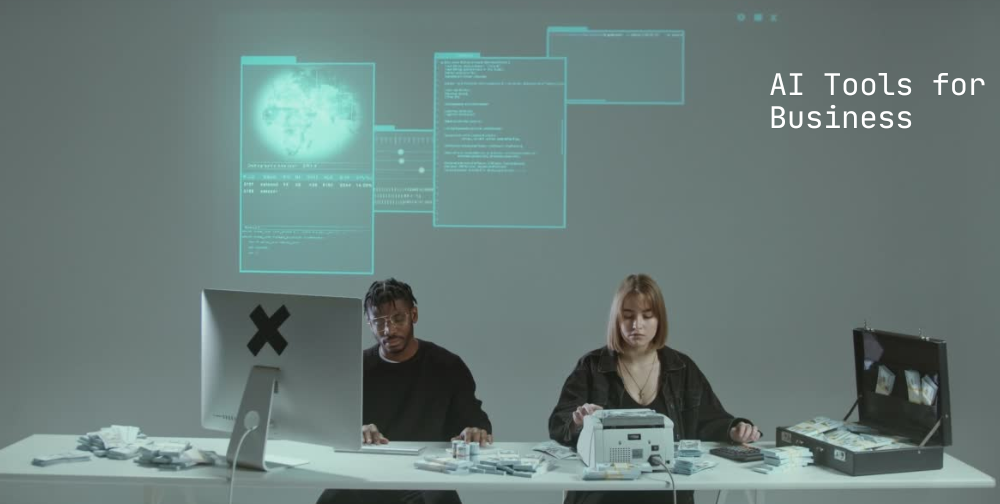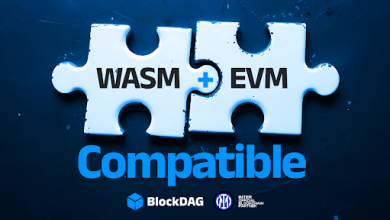10 Must-Have AI Tools for Business in 2025: Revolutionizing Efficiency and Growth

The advent of artificial intelligence (AI) has reshaped the business landscape, offering tools that enhance efficiency, improve decision-making, and unlock innovative possibilities. As of 2025, AI tools are no longer optional but critical for businesses aiming to stay competitive. This article explores ten essential AI tools every business should consider, backed by the latest industry data and future projections.
1) ChatGPT Enterprise
Building on OpenAI’s GPT models, ChatGPT Enterprise offers advanced conversational AI tailored for corporate use. It can generate human-like responses, analyze complex data, and assist with content creation, customer support, and team collaboration. This tool features customizable workflows that provide tailored responses and analytics for specific industries. Additionally, it integrates seamlessly with CRMs, ERPs, and project management tools to ensure smooth operations. ChatGPT Enterprise also offers enterprise-grade data encryption and compliance to maintain security standards. According to Gartner, the conversational AI market is projected to reach $17 billion by 2030, growing at a CAGR of 21.9%. Companies using this tool have reported a 30% reduction in operational costs related to customer service. By 2030, over 85% of customer interactions are expected to be handled without human intervention, making conversational AI a staple for businesses worldwide.
2) Jasper AI
Jasper AI specializes in content generation, making it a go-to tool for marketing teams. It is adept at creating blogs, ad copy, social media posts, and even complex reports with remarkable ease. The tool comes with pre-designed frameworks for blogs, emails, and advertisements, while its AI-driven SEO capabilities optimize content for search engines. Jasper AI also supports multi-user functionality, which fosters collaboration on team projects. A 2025 HubSpot report indicates that businesses leveraging AI-driven content generation tools experience a 42% increase in engagement rates. Jasper AI currently powers content for over 80,000 companies globally. By 2028, AI-generated content is expected to dominate 60% of digital marketing campaigns.
3) Salesforce Einstein
Salesforce Einstein integrates AI into the CRM ecosystem, offering predictive analytics, personalized customer experiences, and automated workflows. This tool prioritizes high-potential leads through lead scoring, gauges customer satisfaction in real time using sentiment analysis, and provides accurate sales and revenue predictions via advanced forecasting capabilities. Forrester’s 2025 report highlights that AI-powered CRMs improve sales efficiency by 40%. Salesforce Einstein’s market share is expected to grow by 25% annually. By 2030, CRMs without AI capabilities will be considered obsolete, as businesses demand smarter, more intuitive tools.
4) UiPath
UiPath focuses on robotic process automation (RPA), helping businesses automate repetitive tasks such as data entry, invoice processing, and customer onboarding. The tool features a drag-and-drop interface that simplifies automation setup. It also integrates advanced algorithms for intelligent automation and supports scalability, making it suitable for businesses of all sizes. The global RPA market is projected to hit $30 billion by 2027, with UiPath leading at a 29% market share. Businesses using UiPath report an average 50% reduction in manual workloads. By 2030, RPA tools like UiPath will account for 75% of all back-office processes, transforming organizational efficiency.
5) Tableau with AI Extensions
Tableau, a leader in data visualization, now incorporates AI features for predictive analytics and natural language queries, making data insights more accessible. Its AI forecasting capabilities allow businesses to predict trends and behaviors, while the “Ask Data” feature generates insights through natural language questions. Tableau integrates seamlessly with data sources such as Salesforce, AWS, and Google Analytics. By 2025, over 95% of Fortune 500 companies are expected to use data visualization tools, with Tableau holding a 60% market share. McKinsey reports a 70% improvement in decision-making efficiency when businesses adopt AI-driven analytics. By 2030, AI-powered analytics will be the norm, enabling real-time decision-making across industries.
6) Grammarly Business
Grammarly Business leverages AI to ensure professional communication across teams. The tool checks grammar, tone, and clarity while offering actionable suggestions for improvement. It ensures messages align with branding guidelines through tone adjustments, provides analytics on communication trends via team insights, and offers tailored suggestions for industry-specific terminology. A 2025 LinkedIn survey revealed that 72% of professionals consider clear communication a top productivity driver. Grammarly Business adoption rates have grown by 50% year-over-year. By 2030, AI-driven communication tools will be a standard feature in business operations, ensuring consistent and professional messaging.
7) HubSpot AI
HubSpot AI enhances marketing, sales, and customer service through predictive analytics and personalized content delivery. This tool features AI-powered chatbots for instant responses to customer queries, delivers personalized recommendations through smart content, and simplifies campaign management via workflow automation. Businesses using HubSpot AI report a 38% increase in lead conversion rates. The marketing automation industry is set to reach $15.7 billion by 2030, with AI-driven solutions leading the charge. By 2028, AI-driven marketing platforms will become indispensable, enabling hyper-personalization at scale.
8) IBM Watson Studio
IBM Watson Studio empowers businesses to build, train, and deploy AI models. It is particularly beneficial for industries like healthcare, finance, and retail. The tool automates data preparation and model selection through its AutoAI feature, supports scalable deployment across cloud, on-premises, and hybrid environments, and delivers actionable insights from complex datasets via advanced analytics. By 2025, IBM Watson Studio’s adoption is growing at a rate of 35% annually, especially in sectors requiring high-level data processing. The global AI model-building market is expected to surpass $12 billion by 2030. By 2035, AI model-building tools will drive 80% of innovations in healthcare and finance.
9) Notion AI
Notion AI integrates AI with project management and note-taking, automating tasks like summarization, brainstorming, and task allocation. This tool assists with brainstorming sessions by generating ideas, automates to-do lists and deadlines via task prioritization, and enhances team productivity through real-time collaboration. Notion AI’s adoption rate has doubled yearly, with over 25 million users globally in 2025. Businesses using Notion AI report a 40% improvement in team efficiency. By 2030, AI-powered collaboration tools will redefine workplace productivity, becoming a core component of team workflows.
10) Azure AI
Microsoft’s Azure AI suite offers tools for machine learning, speech recognition, and computer vision, catering to diverse business needs. Its cognitive services enable advanced speech, vision, and language processing, while custom AI models provide tailored solutions for industry-specific challenges. Azure AI integrates seamlessly with Microsoft 365 and third-party applications, offering unparalleled compatibility. Azure AI’s market share is expected to grow to 23% by 2026, driven by its robust cloud capabilities. Businesses using Azure AI report a 35% faster deployment rate for AI projects. By 2030, cloud-based AI solutions will dominate the enterprise market, with Azure AI leading in innovation and scalability.
Conclusion
AI tools have become indispensable for businesses in 2025, driving innovation, efficiency, and growth. From customer service to data analytics, these tools offer solutions tailored to modern challenges. As adoption rates soar and capabilities expand, businesses that fail to integrate AI risk falling behind. By embracing these ten AI tools, organizations can future-proof their operations, adapt to evolving market demands, and unlock unprecedented opportunities for success.





